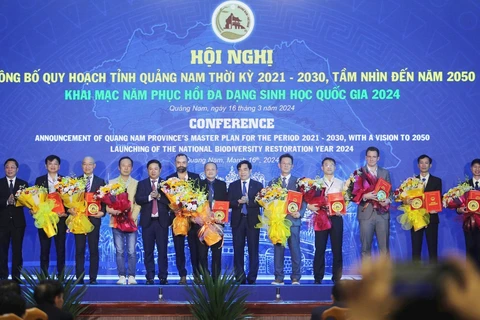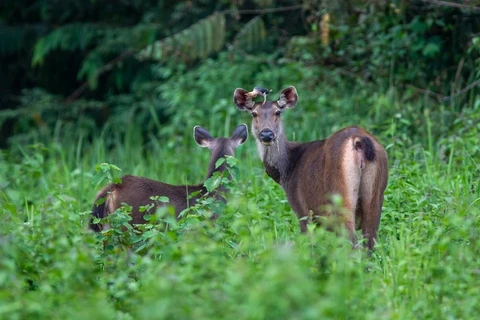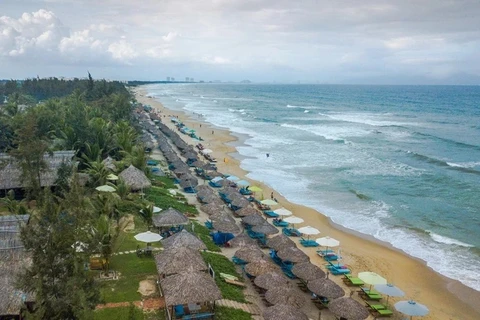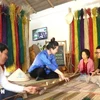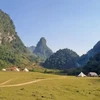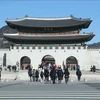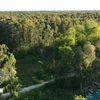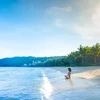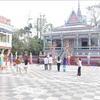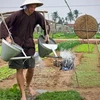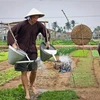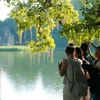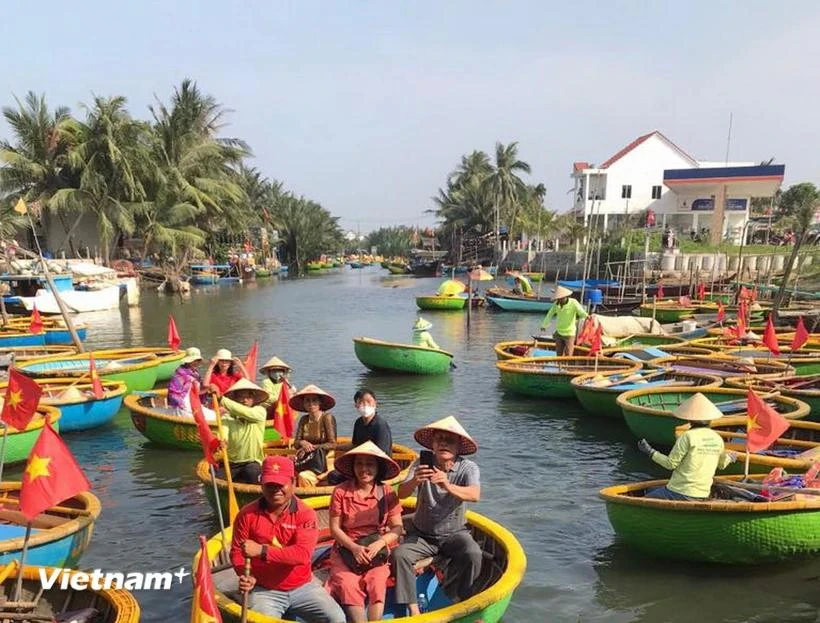
Quang Nam (VNA) – The Bay Mau coconut forest is one of the most popular ecotourism sites in Hoi An City in the central province of Quang Nam.
It reminds visitors of places in the southwestern area with fresh air, a pervasive green coconut forest and leisurely, peaceful boat rides.
The forest is located in Cam Thanh commune, near Cua Dai Bridge, about 4 km from Hoi An city. The name Bay Mau was given because this nipa palm forest previously had an area of about 7 acres (Bay Mau). Currently, the coconut forest area has been developed to be much larger, yet the name Bay Mau remains.
During the resistance war, the forest area was an important base for the Vietnamese army and people. The lush green coconut trees, stretching across the river, unintentionally became a shield to protect villagers and soldiers during wartime.
Over time, with strong tourism development in Hoi An, the coconut forest has become an attractive eco-tourism destination.
The dry season from January to September is the ideal time to travel to the Bay Mau coconut forest, especially August and September when the coconut forest is most beautiful. Visitors should avoid travelling to the area in November and December because there is a lot of rain.
It is said that more than 200 years ago, people brought coconut varieties from the southwestern region of Vietnam to Hoi An.
In 2008, Bay Mau Coconut Forest was recognised by the Quang Nam provincial People's Committee as a cultural historical relic area. Since then, the coconut forest has become an attractive destination on the tourism map of Quang Nam.
Along the Hoai River, there are many boat wharves where tourists can take a boat and sail a few kilometres to the Bay Mau coconut forest.
Arriving at the forest, visitors are immersed in a vast green space of coconut trees.

The forest area is also the perfect habitat of many species such as shrimp, crabs, and mollusks. It acts as a filter to purify the water before it flows into the sea.
Among immense coconut forests, tourists are also surprised to see houses with roofs made from coconut leaves. Visitors can sit in basket boats rowed by locals and enjoy the beauty of the river. They can see schools of fish swimming freely, and storks nesting in coconut trees.
The experience is amazing, sitting on a coracle boat, floating on the river, weaving into small creeks, and gazing at the rows of green coconut trees in the unforgettable setting of nature. The round coracle boat requires only light rowing and takes people through countless small creeks. The coracle boater tells stories about the Bay Mau coconut forest. The place that used to be a strong revolutionary base, witnessing the smoke, fire, and bombs of war, is now a place of ecotourism and peace. The shade of coconut trees is extremely pleasant. The area draws tourism from both domestic and international holidaymakers.

A unique tourism product of the Bay Mau coconut forest is the expert performances of the boatmen as they challenge each other to coracle spinning. The person rowing the coracle rotates 180 degrees in the middle of the waves. Onlookers get dizzy just watching the competitions. This challenge also attracts visitors who want to enjoy a heart throbbing experience because just a few rotations is enough to impair the senses. The performance also allows visitors to see a fisherman’s life and skills firsthand, casting nets to catch fish, and racing boats on the Thu Bon River.
Tourists can also join folk games such as tug of war or boat racing and enjoy local dishes including grilled fish, banana flower salad, and coconut sweet soup.
Notably, residents join in taking tourists to visit and explore the coconut forest. Now, over 20 households in Cam Thanh commune have participated in community-based and sustainable ecotourism./.
